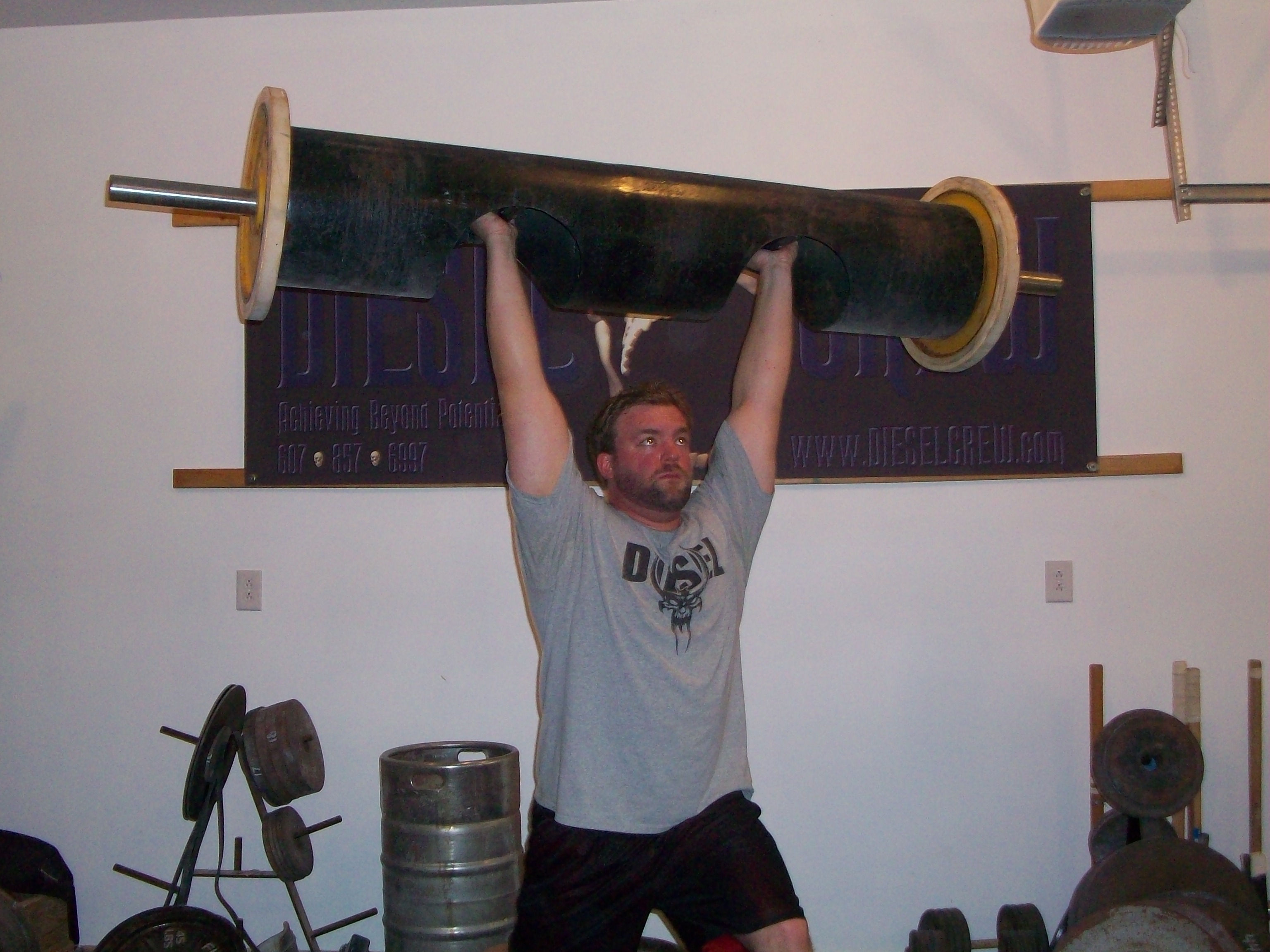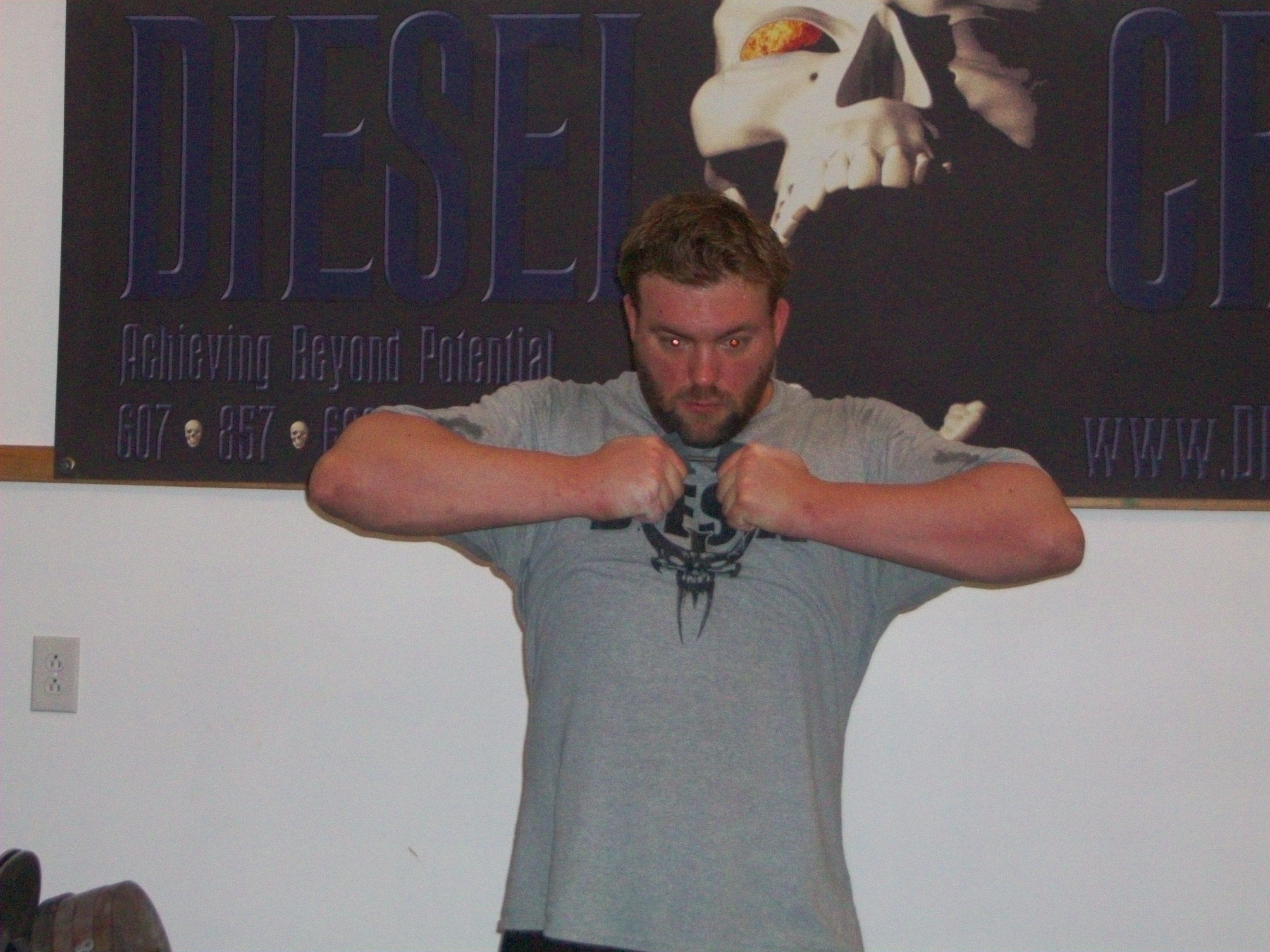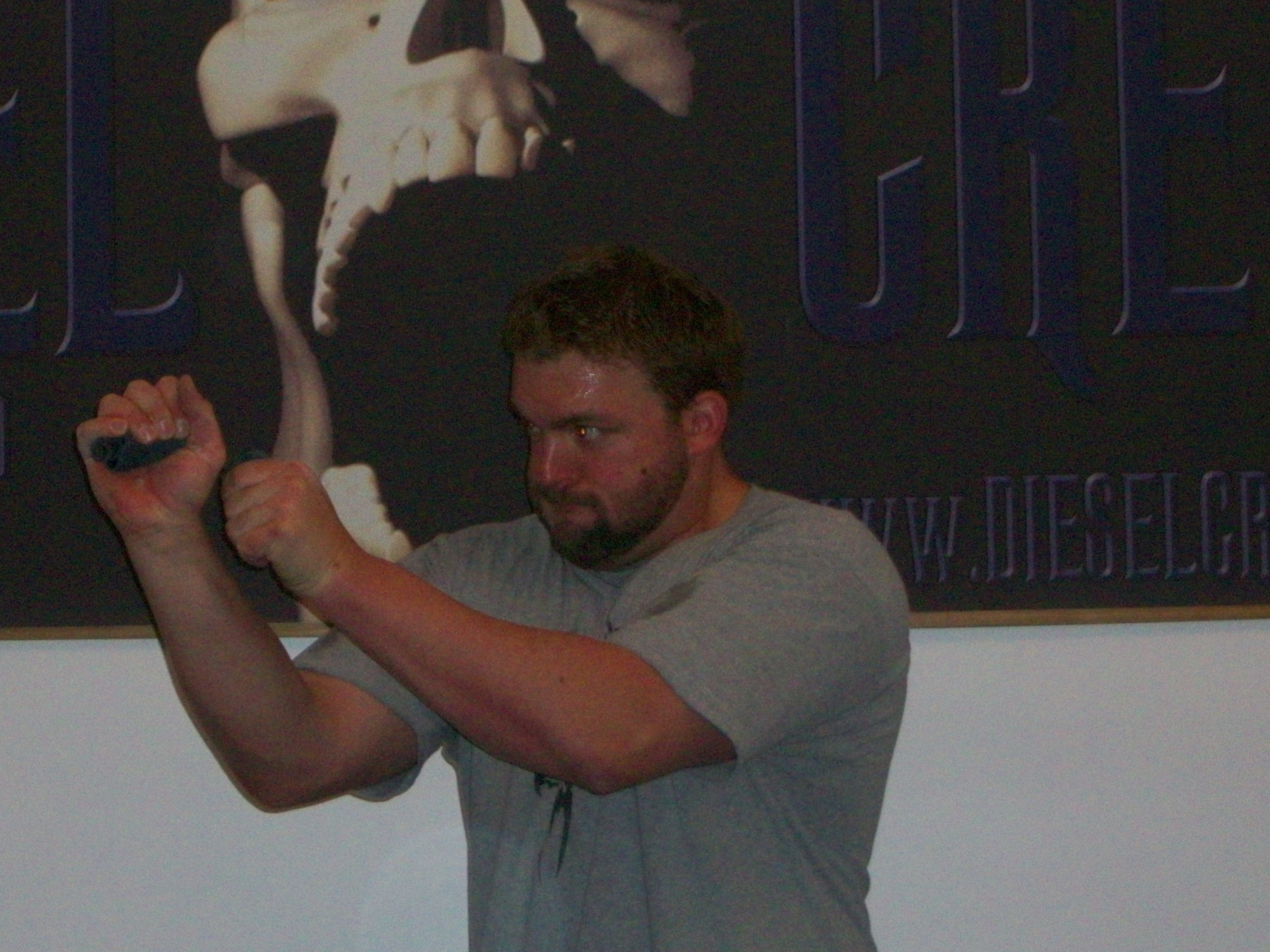3 Feats of Strength: An Introduction to Strongman Exercises
by on December 16, 2009
George Hackenschmidt – Legendary Oldtime Wrestler and Strongman
Editor’s note: This is a guest post by Jedd Johnson, CSCS from DieselCrew.com.
In the past, the pioneers of strength, like George Hackenschmidt, and other classic strongmen and wrestlers, were built like machines and were able to move serious weight and do feats of strength that left you thinking, “WOW.”
The primary focus on the part of these performers was strength, while the appearance of their body came secondary.
They foucused on strengthening their legs, back, and grip first and by using complex, ground based movements, the size of their shoulders, arms, and chest followed right along.
George Hackenschmidt didn’t try to build a V-shape torso with flared lats and a wasp-like waist. He built a thick back, a thick core, and could support tremendous amounts of weight in movements like the squat and deadlift.
_________________________
These days, it’s different. Most of the weight training that goes on in the gym today is not nearly as focused on the development of strength. Now, the focus is mostly on aesthetics – perfectly proportioned biceps and calves, a broad chest, and big biceps.
You can bet the Sandows of the day didn’t care about the peak on their biceps. The Hackenschmidts of the era weren’t worried about a big pump in their chest.
Somewhere along the lines, there was a shift from being strong to looking good. Much of this shift can be blamed on the overwhelming presence of bodybuilding literature at the newsstand.
For me, however, when it comes to a rewarding experience in the gym, bodybuilding falls short. I am more interested in building strength. In fact, much of my training revolves around doing what the oldtime strongmen considered “feats of strength.”
I want to share with you all what I feel are the best feats of strength to perform in order to build a strong back, powerful body, and an impressive grip.
Overhead Lifts
Without a doubt, one the best pure feats of strength is lifting something from the floor and up overhead. I don’t care if it’s a barbell, a dumbbell, a stone, or a beer keg filled with sand and water, there is just something about getting the object to arm’s length overhead that means you are truly strong. To do this requires practically all the musculature in the body from the ground to the hands. If your back is weak, the object won’t make it off the ground. If your legs are weak, they will crumble beneath the load as you try to push it up overhead. And if your mind is weak, you can get halted at any point along the way.
The best thing about overhead lifting is that you are getting up out of a seated position and performing the lift on your feet. This type of lifting requires more talent and athleticism than the seated variations which in turn makes you more of an athlete and more of a man.
The Log Overhead Lift
The majority of my overhead lifting is done with a log. I have competed in many Strongman competitions and the Log was always one of my favorite events, whether it was for max weight or for repetitions. Not only does it build your overhead strength, but also makes your lower back stable, as well as the grip.
The Keg Overhead Lift
I love Keg Lifting also, because kegs are so unstable. While you can hold a barbell or dumbbell pretty easily, the keg has a dynamic center of gravity that you have to compete with along with the fact it is so heavy and bulky.
Odd Object Lifting and Carrying
It is one thing to lift something heavy off the ground. It’s another thing altogether to pick it up and then carry it.
This is the primary difference between the sport of powerlifting and the sport of strongman. In the sport of powerlifting, the lifts that are executed are the bench press, the deadlift, and the squat. While tremendous weights are lifted in these three disciplines, all that takes place is the lifting and lowering of the weights. In many strongman competitions, however, the objective is to lift and then move heavy and bulky items such as stones, farmer’s walk implements, yokes, and sandbags. This is often done at high rates of speed as well. The athletes in strongman competitions have to be extremely strong, and be able to move nimbly over the course to be successful.
Carrying heavy objects, just like overhead lifting, requires the recruitment of every muscle in the body. With each step, tremors course through the body, requiring you to re-adjust and stay on track. The joints have to be strong and stable in order to keep from buckling with each stride, all while keeping your breathing under load. Carrying objects is a great way to train, and it can be done in the gym or in a parking lot or field. The most important thing is not where it is done, but that it actually gets done.
Homemade Farmers Implements
The Farmer’s Walk is a basic strongman event. You just pick up the farmers and take off. My farmers were made by a friend from scrap industrial pieces. He made the handles extra thick so it is more taxing on the grip and the handles are extra high, which causes swing. You have to be ready to stroll with these things.
Keg Carrying – The Toughest Walk in the Park You’ll Ever Have
Carrying the keg is a challenge not only because you have to pick it up but because you then have to move with it. Also, because it sits on your belly, it can be very hard to breath.
Bending Steel
There are few things in strength training that feel as good as bending steel. Strength feat enthusiasts have enjoyed bending nails, bolts, stock, wrenches, hammers, horse shoes and more for years. Training for this type of feat is becoming more common all the time as resources become more available to the public.
Generally when bending steel, there is some form of protective covering placed on the ends of the item being bent to avoid puncturing the skin. Usually this is a towel or thin piece of suede leather. This is extremely important because the hands have to press on the ends of the object with a great deal of pressure. If there is no protection, there is a much higher risk of injury, especially punctures and lacerations. Also, with no protection, the pain factor is escalated and when that happens it is much harder to apply full strength into the object, and the feat might not be completed.
Obviously, there has to be some limitation to how much protective gear is used because eventually it becomes padding. A balance needs to be maintained between protecting yourself and making the feat too easy.
There are two main types of bending – braced bending and unbraced bending. Braced bending is done by pushing the object against your thigh, knee, or other part of the body to get the bend started. When bending very long objects, like steel bars, very thick objects, like wrenches and hammers, or very resilient items, such as frying pans, bracing is needed. Unbraced bending is done by keeping the object free of the body for the most part and relying more on hand and wrist strength to start and complete the feat.
In order to bend something, you have to go about it with intensity. When going for a top-level bend, if you are not 100% focused on the bend at hand, you will not be successful.
Short unbraced bending, such as nail, bolt, and stock bending is featured in many grip strength competitions each year. Unbraced bending is chosen because it is a better means for testing hand, wrist and grip strength.
Double Overhand Bending
Double Underhand Bending
Reverse Bending
As you can see, there are many ways to bend steel. However, short bending should not be considered a grip strength feat only. There is a great deal of engagement of the core and torso to create radiant tension that travels down through the arms and into the hands to strengthen the grip on the object being bent. This increase in tension increases your bending ability while at the same time making it a safer practice as it keeps your hands from slipping off the object and causing injury. If you are interested in learning how to bend nails, bolts and other items, there is no better resource than the Nail Bending eBook. It is the definitive resource on short, unbraced bending.
_________________________
As you can see, there is much more to training that can be done in the weight room than just bodybuilding. While bodybuilding is a perfectly healthy and rewarding endeavor, feat of strength training can actually be just as effective at building muscle and getting a respectable body. The added benefit of feat training is the real world strength that comes along with it, strength you can keep under wraps until you need it for something serious, like changing a tire or carrying your friends out of a burning building. If you have any questions, please feel free check out my site, DieselCrew.com. Feel free to leave a comment or to drop me an email at jedd[dot]diesel[at]gmail[dot]com.
Jedd Johnson is a Certified Strength and Conditioning Specialist in Northeastern PA. He specializes in Grip Strength Training but studies all types of strength training disciplines. His website, http://www.DieselCrew.com is an on-line community with the objective of helping its readers become as strong and healthy as possible.
Saturday, December 19, 2009
Art of Manliness - 3 Feats of Strength: An Introduction to Strongman Exercises
Cool stuff for anyone who likes strong man stuff.
Tags:
Subscribe to:
Post Comments (Atom)








No comments:
Post a Comment